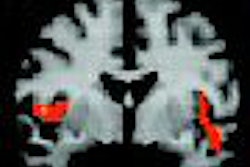While they may not have full-blown osteoporosis, women with mildly reduced bone mass may still suffer from vertebral deformities that are consistent with fracture. The question is whether these women should receive antiresorptive drug therapy, and at what cost.
Seeking the answer, Minneapolis researchers tested spinal x-rays to determine if they are a feasible, and financially sound, way to select osteopenic women for treatment.
"Ours is the first modeling study to estimate the potential cost-effectiveness of using spine imaging to identify osteopenic postmenopausal women with one or more prevalent vertebral deformities and treat them," wrote lead author Dr. John Schousboe from Park Nicollet Health Services. "Spine radiography more powerfully distinguishes those at high risk of fracture than weaker, single clinical risk factors can" (Osteoporosis International, August 31, 2005).
Schousboe's co-authors are from the University of Minnesota and the VA Medical Center, both in Minneapolis, as well as the Mayo Clinic in Rochester, MN.
For this study, the group constructed a Markov cost-utility model with women age 60 and older, stratified into two arms: those with a prevalent vertebral deformity and those without. The following eight health states were applied to both arms:
- No fracture
- Postdistal forearm fracture (DFF)
- Postclinical vertebral fracture
- Postradiographic vertebral fracture
- Posthip fracture
- Post other fractures
- Posthip and vertebral fracture
- Death
The researchers then compared three treatment strategies: five years of amino-bisphosphonate (alendronate) therapy for all, five years of alendronate therapy only for those with a prevalent radiographic vertebral deformity, or no initial alendronate treatment. Quality-adjusted life year (QALY) values were assigned for one year spent in each health state. Lifetime direct medical and indirect costs, as well as incremental cost-effectiveness ratios (ICERs), were tracked. Finally, the investigators assumed a societal willingness to pay per QALY gained of $50,000.
According to the results, "the strategy of performed spine radiographs in postmenopausal osteopenic women with T-scores at or below -1.5, and treatment of those with one or more vertebral deformities, is likely to be cost-effective."
More specifically, for women with one or more prevalent vertebral deformities, the costs per QALY gained ranged from $5,084 (for an 80-year-old with a T-score of -2.4) to $61,192 (for a 60-year-old with a T-score of -2.4).
For women without prevalent vertebral deformities, the costs per QALY gained ranged from $41,897 (60-year-old; T-score of -2.4) to $166,219 (80-year-old; T-score of -1.0).
The authors found that for women with one or more vertebral deformities, the ICERs were significantly lower. For those without any vertebral deformity, the ICERs were higher.
"Risk factors that will allow cost-effective selection of osteopenic women for amino-bisphosphonate therapy will be those that are strongly predictive of fracture independent of (bone mineral density), and are reasonably common among osteopenic women," the authors explained. "Alendronate appears to be cost-effective in women age 60 and older with one or more radiographic vertebral deformities and a femoral neck T-score of -1.5 or lower."
By Shalmali Pal
AuntMinnie.com staff writer
September 21, 2005
Related Reading
Teriparatide and alendronate help improve bone mass, August 26, 2005
Premenopausal women with rheumatoid arthritis have marked bone loss, June 22, 2005
Alendronate not cost effective for most women with osteopenia, May 3, 2005
Copyright © 2005 AuntMinnie.com



















